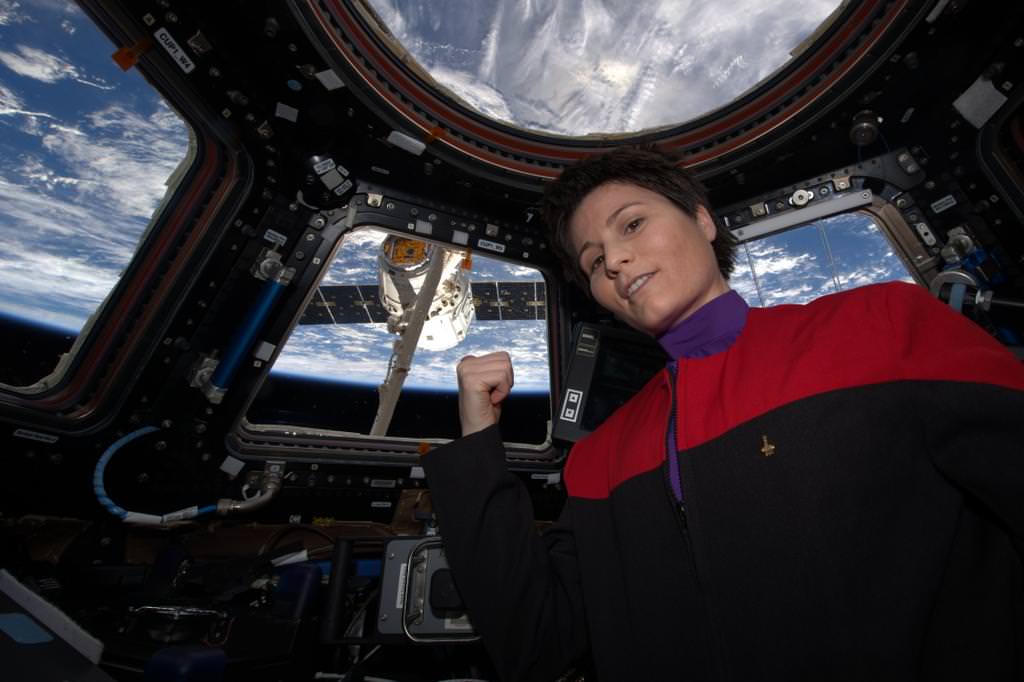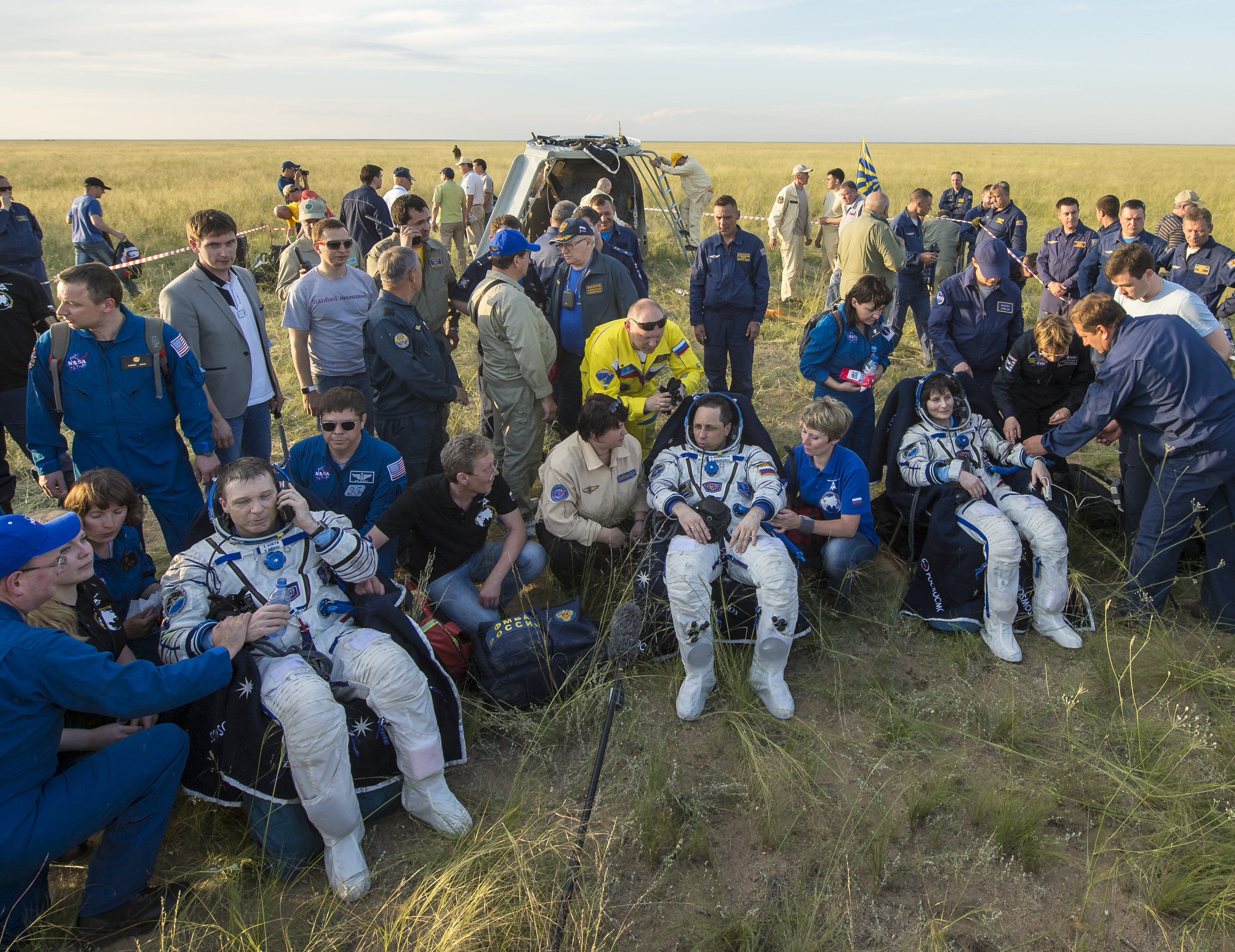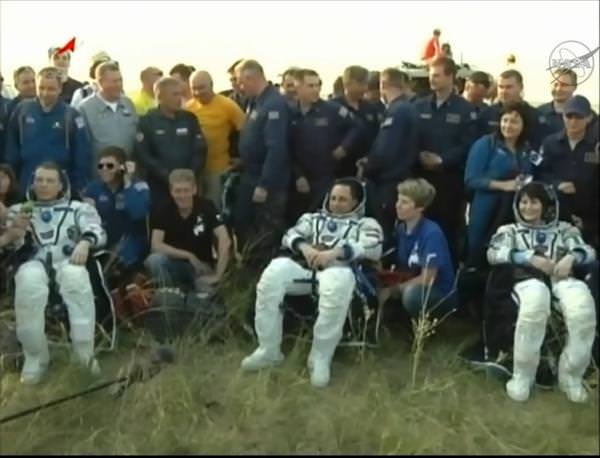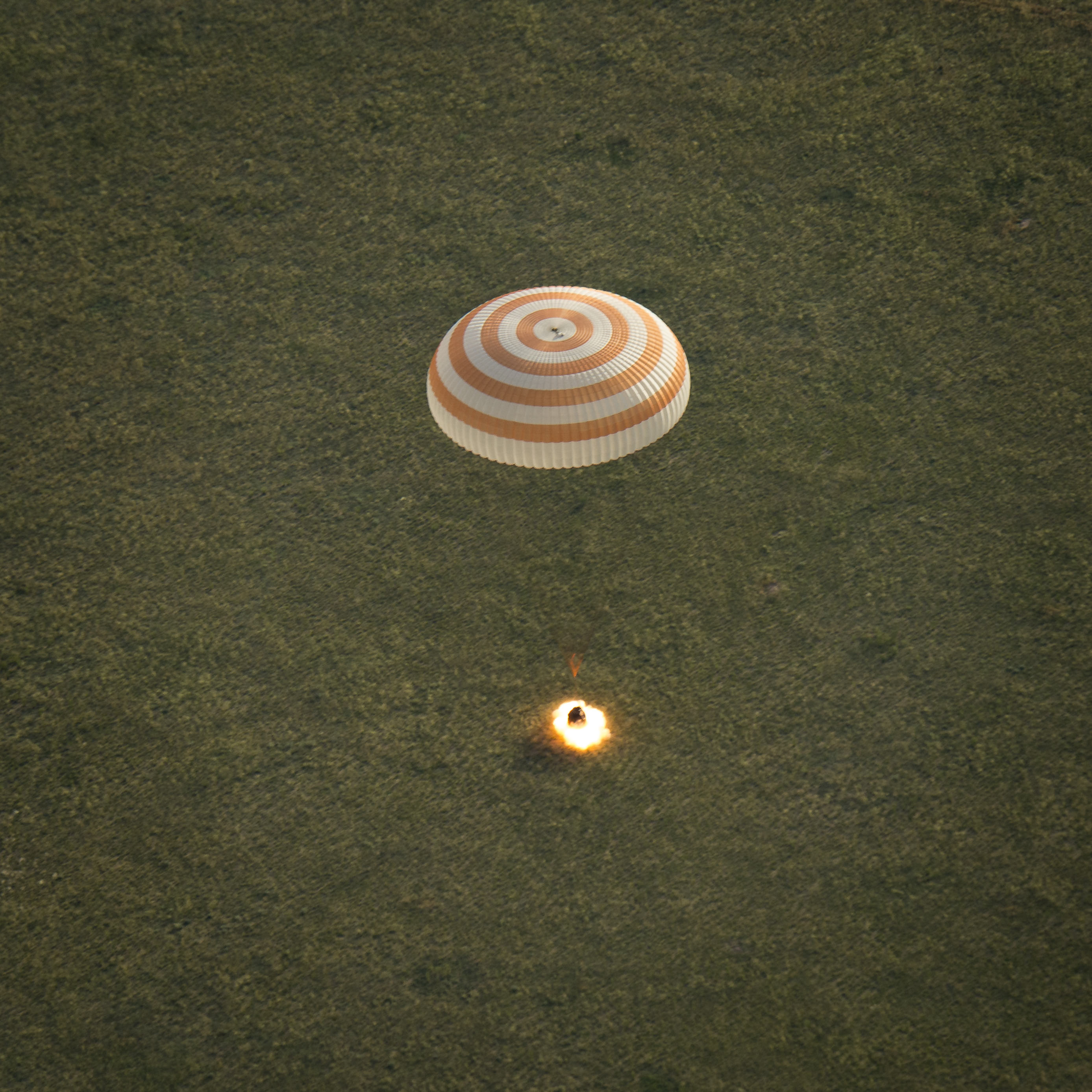An international crew comprising a Russian cosmonaut, a US astronaut and an Italian astronaut who accomplished a record setting flight for time in space by a female, departed the International Space Station (ISS) earlier today, June 11, and safely landed in sunny and warm Kazakhstan tucked inside their Russia Soyuz ferry ship after a successful and extended 199-day mission devoted to science and station upgrades.
The multinational trio comprising Expedition 43 Commander Terry Virts of NASA, Flight Engineers Anton Shkaplerov of the Russian Federal Space Agency (Roscosmos) and Samantha Cristoforetti of ESA (European Space Agency) undocked from the orbiting outposts Russian Rassvet module as scheduled in the Soyuz TMA-15M spaceship at 6:20 a.m. EDT while soaring some 250 miles (400 kilometers) above Mongolia.
A four-minute 40-second deorbit burn at 8:51 a.m EDT slowed the craft for the fiery reentry into the Earth’s atmosphere.
The crew touched down just a few hours after undocking at 9:44 a.m. EDT (7:44 p.m., Kazakh time), southeast of the remote town of Dzhezkazgan on the steppes of Kazakhstan, about an hour and a half before sundown in delightfully summer weather. Temperatures today were in the 80s, but they are ‘bone chilling’ in the winter months.

The Expedition 43 flight was extended at the last minute due to the surprise launch failure of a Russian rocket carrying a station bound Progress resupply ship in late April.
The Progress 59 cargo vessel, also known as Progress M-27M, spun wildly out of control as it separated from the Soyuz-2.1A carrier rocket. The freighter and all its 2.5 tons of contents fpr the crew were destroyed during an uncontrolled plummet as its crashed back to Earth on May 8.
The Soyuz/Progress 59 failure had far reaching consequences and resulted in a postponement of virtually all Russian crew and cargo flights to the ISS for the remainder of 2015, as announced this week by Roscosmos, the Russian Federal Space Agency.
One result is that Cristoforetti now holds the single mission record for a female astronaut, of nearly 200 days.
Expedition 43 was extended by about a month in the wake of the launch failure of the Progress 59 cargo vessel, which quickly cascaded into an extended mission from its originally planned length of about 170 days to 199+ days.
The Soyuz is only certified to stay on orbit for 200 days. So the return home delayed as much as possible to minimize the time when the ISS reverts to only a three person crew – and consequently reduced time for research.
This past weekend on June 6, Cristoforetti surpassed the female astronaut record of 194 days, 18 hours and 2 minutes established by NASA astronaut Sunita Williams on a prior station flight back in 2007.
Cristoforetti, of the European Space Agency (ESA), is on her first ever space flight also counts as she also counts as Italy’s first female astronaut.
The station departure and parachute assisted soft landing was shown during a live webcast on NASA TV.
“The landing was on time and on target after over 199 days in space,” said NASA commentator Rob Navius.
“Everything went by the book for an on target touchdown. The crew is safely back on Earth!”

In the final stages of the return to Earth, the Soyuz descent module glided down safely using a single mammoth orange and white parachute, aided by braking rockets in the final moments just a few feet above ground.
The Soyuz landed upright, which eased the extraction of the crew. Russian recovery team members hoisted all three up and out from the cramped capsule.
Soyuz commander Anton Shkaplerov was hauled up first, followed by Samantha Cristoforetti and finally Terry Virts.
All three crewmembers were healthy and happy, each signaling their elation with a joyous ‘thumbs up.’
After preliminary medical checks, the crew were flown by helicopter to a staging base at Karaganda. From there they split up. Shkaplerov heads back to Moscow and Star City. Cristoforetti and Virts fly to Mission Control in Houston.
During their time aloft, the crew completed several critical spacewalks, technology demonstrations, and hundreds of scientific experiments spanning multiple disciplines, including human and plant biology,” according to NASA.
Among the research experiments conducted were “participation in the demonstration of new, cutting-edge technologies such as the Synthetic Muscle experiment, a test of a new polymer that contracts and expands similar to real muscle. This technology has the potential for future use on robots, enabling them to perform tasks that require considerable dexterity but are too dangerous to be performed by humans in space.”
“The crew engaged in a number of biological studies, including one investigation to better understand the risks of in-flight infections and another studying the effects microgravity has on bone health during long-duration spaceflight. The Micro-5 study used a small roundworm and a microbe that causes food poisoning in humans to study the risk of infectious diseases in space, which is critical for ensuring crew health, safety and performance during long-duration missions. The Osteo-4 study investigated bone loss in space, which has applications not only for astronauts on long-duration missions, but also for people on Earth affected by osteoporosis and other bone disorders.”
Three cargo flights also arrived at the ISS carrying many tons of essential supplies, research equipment, science experiments, gear, spare parts, food, water, clothing.
The resupply freighters included the Russian Progress in February 2015 as well as two SpaceX Dragon cargo ships on the CRS-5 and CRS-6 flights in January and April.

With the return of Virts crew, the new Expedition 44 begins and comprises NASA astronaut Scott Kelly and Russian cosmonauts Mikhail Kornienko, the two members of the first “ISS 1 Year Mission” as well as cosmonaut Gennady Padalka.
Padalka now assumes command of the station for a record setting fourth time. And he’ll soon be setting another record. In late June, he will break the all time record for cumulative time in space currently held by cosmonaut Sergei Krikalev of 803 days on six space flights.
When Padalka returns to Earth around September 10 in the Soyuz TMA-16M ship, that brought the 1 Year crew to the ISS, he will have been in space for a grand total of over 877 days over five flights.
The next cargo ferry flight involves NASA’s next contracted unmanned Dragon cargo mission by commercial provider SpaceX on the CRS-7 flight.
Dragon CRS-7 is now slated for liftoff on June 26. Watch for my onsite reports from KSC.
The Dragon will be carrying critical US equipment, known as the International Docking Adapter (IDA), enabling docking by the SpaceX Crew Dragon and Boeing CST-100 astronaut transporters – due for first crewed launches in 2017.
The most recent unmanned Dragon cargo CRS-6 mission concluded with a Pacific Ocean splashdown on May 21.

Stay tuned here for Ken’s continuing Earth and planetary science and human spaceflight news.



So Samantha will go to Houston instead of back to Italy, probably to face a battery of tests? Will her family be joining her there? Does NASA set them up in nearby housing and pay the tab? Hope so.. she done good!
Crazy to think that the vehicle that allows astronauts (cosmonauts) to travel back and forth from the ISS lands by use of parachutes, a technology first invented in the 1400’s and first successfully tested in the 1700’s! I guess some technologies have lasting power.